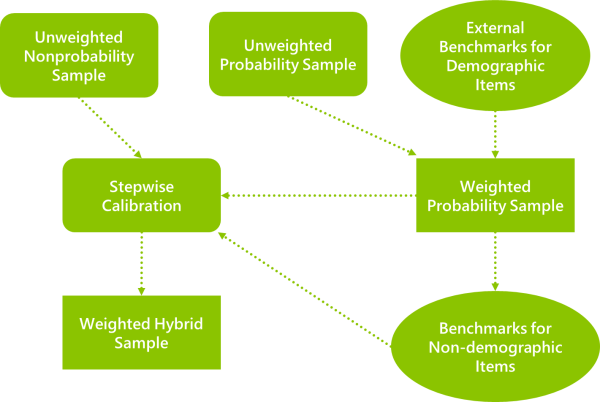
Reasons to Consider SSRS Encipher Hybrid Samples
- Research consistently finds that probability-based samples remain the “gold standard” for projecting estimates to a larger population but can be cost-prohibitive for many clients.
- Nonprobability samples offer a much lower cost-per-complete but yield biased population estimates even if weighted on demographics because self-selection into online samples is driven by characteristics, attitudes, and behaviors that are not captured by traditional weighting demographics.
- SSRS has developed an approach that utilizes data science to create a fully-customized and affordable solution to each unique application of hybridized data. This allows us to take advantage of both the low cost of nonprobability sampling (to obtain larger sample sizes) and the statistical rigor of probability sampling (to reduce the risk that estimates will be biased).
The SSRS Encipher Hybrid Approach

Meet Encipher Hybrid
Get all the details about the new SSRS Encipher Hybrid methodology for blending probability and nonprobability samples in our white paper.
Read It
Another Option: Encipher Nonprob
When budgets or timelines do not permit the inclusion of even a small probability sample, the SSRS Encipher Nonprob solution can recover some of the benefits of a full hybrid design.
Learn MoreSSRS Encipher in Action
Case Studies and Presentations that Showcase Encipher

A Case Study in Adaptation and Using Hybrid Samples to Produce Estimates for Subgroups
Learn More About How Encipher Hybrid was Used

A Case Study in Using Our Hybrid Approach to Better Understand Perceptions of For-Profit Colleges
Learn More About How Encipher Hybrid was Used

Can one weight fit all? Adjusting Hybrid Samples for Subgroup Estimation
MAPOR 2022 Conference Presentation






